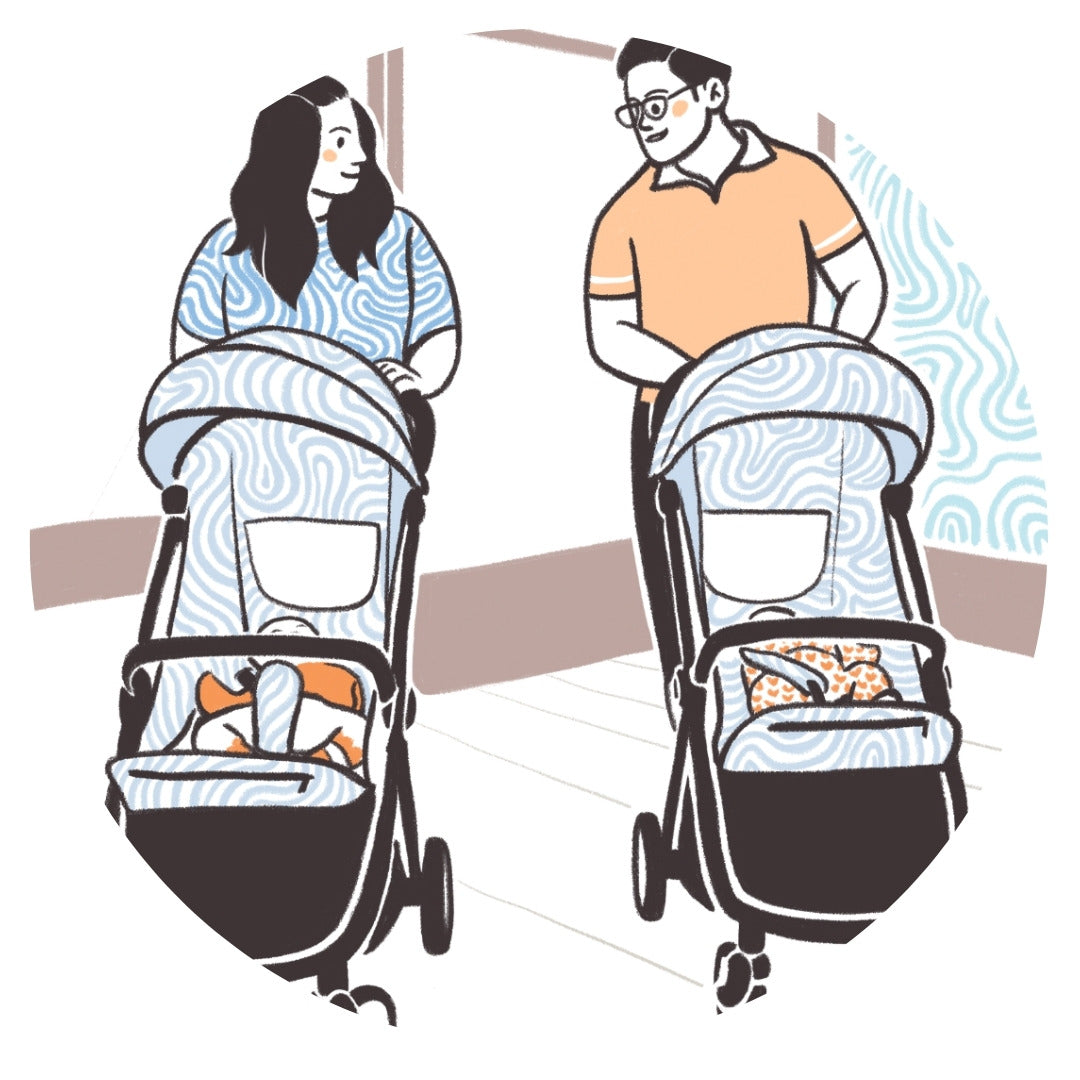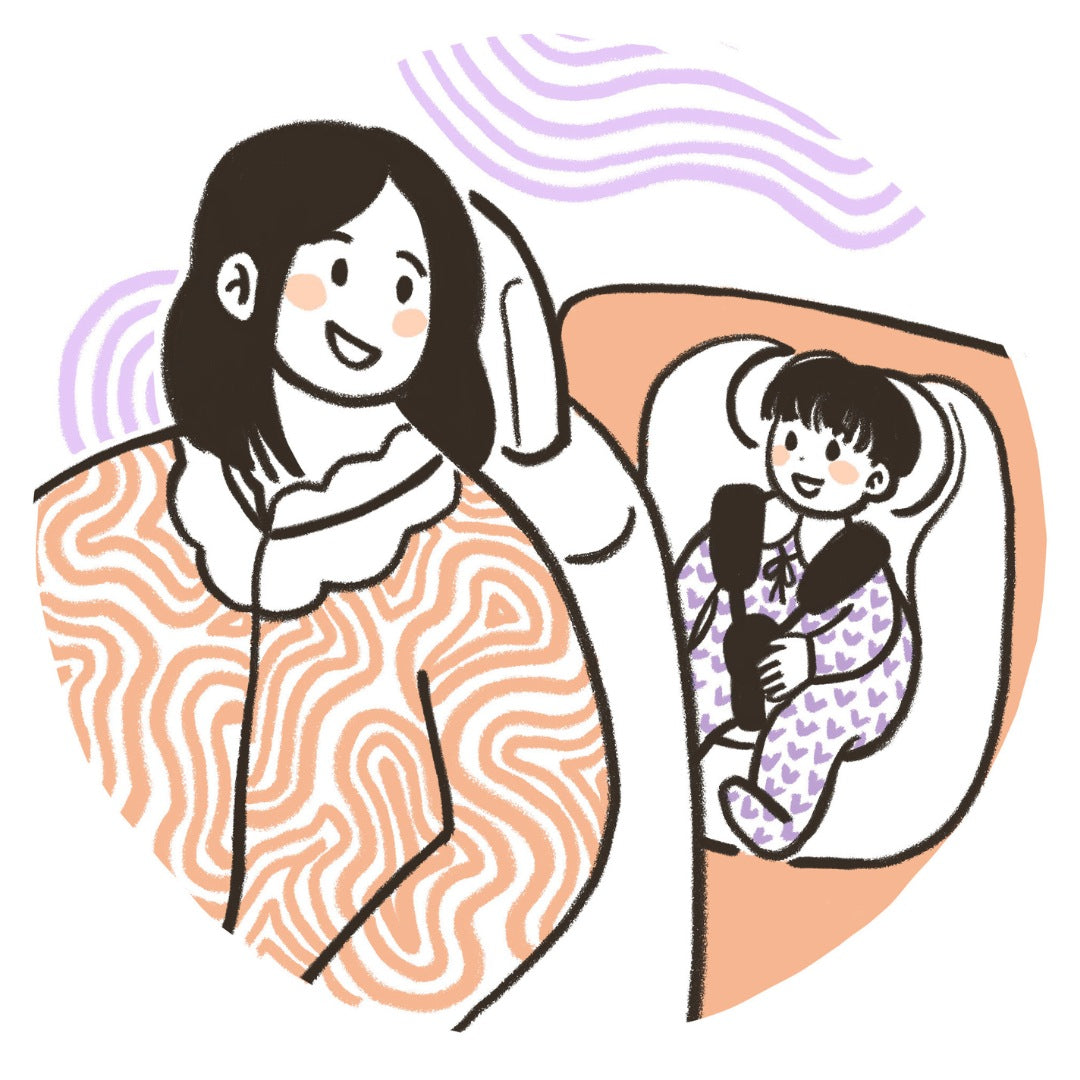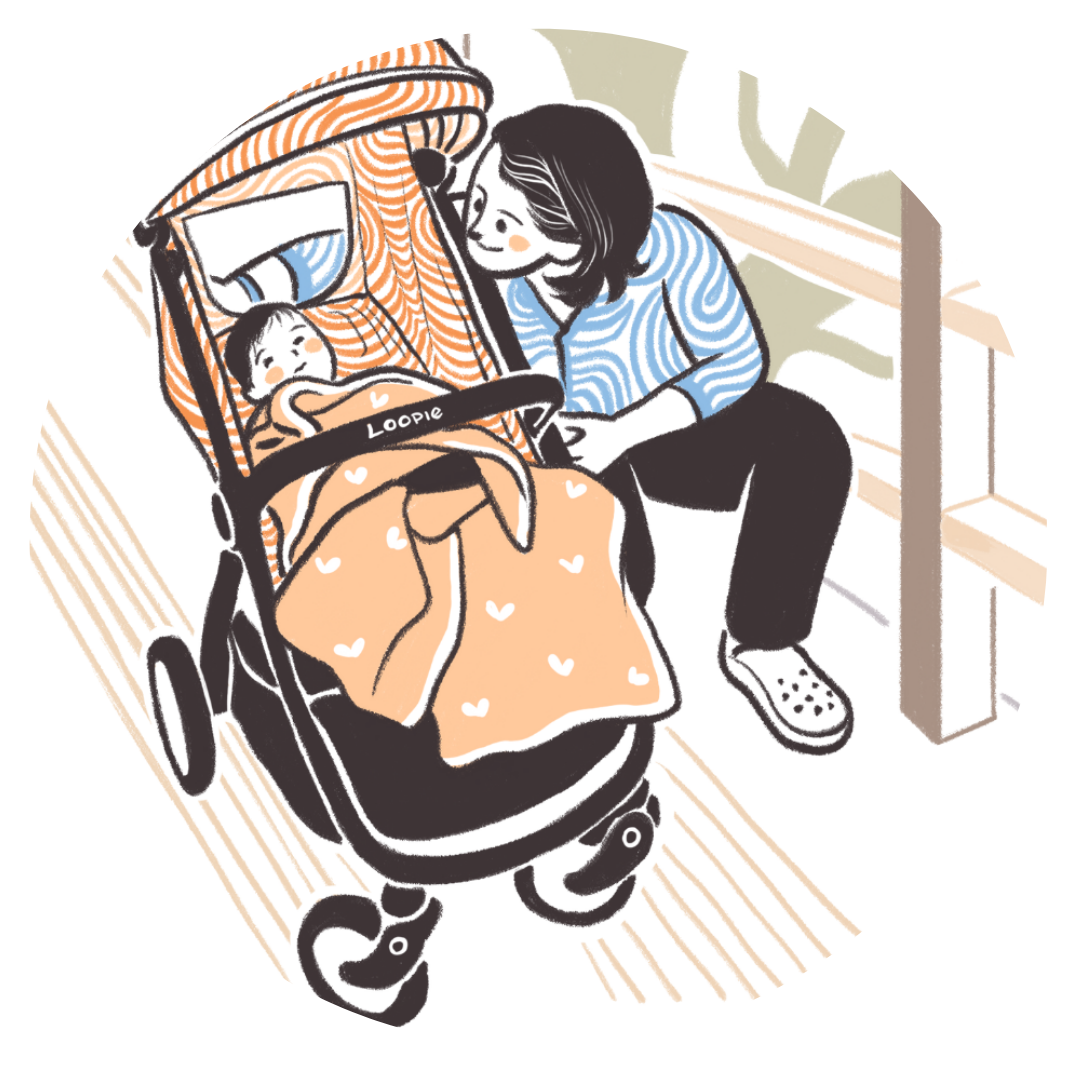How Can Babies Sleep Safely in Strollers? Dos and Don’ts

Your baby has finally drifted off in the stroller during your afternoon walk, their tiny hands relaxed, their breathing steady, and you're enjoying the moment as well. It’s a sight that melts any parent’s heart. After all, motion naps are a lifesaver on busy days, and the stroller often feels like magic when nothing else works.
But as you watch them sleep so peacefully, a few questions naturally pop up: Is it okay for babies to nap in strollers? How long is safe? Should I transfer them to the crib once we’re home?
You’re not alone - every parent wonders the same. The good news? Babies can sleep safely in strollers when it’s done right. With a few mindful practices and simple safety checks, you can make stroller naps both comfortable and secure
What to Keep in Mind While Reading
Every baby is different, and their age significantly affects safe stroller sleep guidelines. What's appropriate for a newborn differs from what works for a six-month-old or a toddler. These guidelines provide general safety principles, but always consult your paediatrician about your specific child's needs, especially if they have any health conditions affecting breathing or muscle tone.
Age-Specific Stroller Sleep Guidelines
For 0-3 Months
For newborns through 3 months, stroller sleep requires a bit of attention. At this stage, babies have limited head and neck control, making proper positioning critical. If your stroller has a fully flat recline option suitable for newborns, use it for any sleep. Avoid letting newborns sleep in strollers that keep them in seated positions. Always ensure you can see your baby's face and that their head isn't slumping forward. Limit stroller sleep duration at this age, transitioning to a proper crib or bassinet as soon as practical.
For 4-6 Months
Between four and six months, babies develop better head control but still need careful attention during stroller sleep. Use the recline function to create as flat a position as your stroller allows. Check positioning frequently to ensure their head remains properly aligned. Begin transitioning longer naps to a crib while allowing shorter stroller naps during necessary outings. Monitor that baby isn't slouching or slumping as they grow and gain weight.
6 Months Onwards
From six months onward, babies typically have good head control and stronger neck muscles, making stroller naps safer. They can generally maintain safe head positions even when seated more upright. However, proper stroller positioning remains important. Watch that your growing baby hasn't outgrown the stroller's seating in ways that create uncomfortable or potentially unsafe positions. Continue prioritizing nighttime sleep and longer naps in appropriate sleep spaces while accepting that stroller naps are part of active family life.
Essential Dos for Safe Stroller Sleep
Use your stroller's recline function appropriately for your baby's age. Younger babies need positions as close to flat as possible, while older babies with good head control can safely sleep in more upright positions. Follow your stroller manufacturer's guidance about recline angles for different ages.
Check your baby's position frequently throughout their nap. Even babies with good head control can shift during sleep into positions that might compromise their airway. Regular checks every few minutes allow you to adjust their position if needed before it becomes problematic.
 Ensure proper harness use during all stroller naps. The harness keeps baby secure and prevents them from slouching down in ways that could be dangerous. It should be snug but comfortable, with enough room to fit two fingers between the harness and your baby's chest.
Ensure proper harness use during all stroller naps. The harness keeps baby secure and prevents them from slouching down in ways that could be dangerous. It should be snug but comfortable, with enough room to fit two fingers between the harness and your baby's chest.
 Dress your baby appropriately for temperature regulation. Stroller sleeping can make babies warmer than you'd expect due to contained space and blankets. Check regularly that they're comfortable, not overheating, by feeling the back of their neck or their chest under their clothing.
Dress your baby appropriately for temperature regulation. Stroller sleeping can make babies warmer than you'd expect due to contained space and blankets. Check regularly that they're comfortable, not overheating, by feeling the back of their neck or their chest under their clothing.
Critical Don'ts for Stroller Sleep Safety
Never cover your baby's face with blankets, muslins, or any fabric while they sleep in a stroller. While you might intend to create shade or privacy, covering can restrict airflow and prevent you from monitoring their breathing and position. Use stroller canopies or purpose-designed covers that maintain clear visibility and airflow around your baby's face. Don't use strollers for extended nighttime sleep or as a regular sleep space. Strollers are for transportation and incidental napping during necessary outings, not for replacing proper sleep environments. Once you're home or stopped for extended periods, transfer sleeping babies to appropriate sleep spaces like cribs or bassinets.
Don't use strollers for extended nighttime sleep or as a regular sleep space. Strollers are for transportation and incidental napping during necessary outings, not for replacing proper sleep environments. Once you're home or stopped for extended periods, transfer sleeping babies to appropriate sleep spaces like cribs or bassinets.
Avoid allowing babies to sleep in strollers with poor recline options if they don't yet have strong head control.
Never leave your baby unattended while sleeping in a stroller, even briefly. The temptation to step away "just for a minute" can be strong, but unattended babies face risks from position changes you won't notice immediately. Supervision is non-negotiable.
Recognizing Safe Sleep Positions in Strollers
A safe sleep position in a stroller has several key characteristics. Your baby's head is in a neutral position, neither falling forward toward their chest nor hyperextended backward. Their airway is clearly open with no obstruction from chin-to-chest positioning. You can easily see their face and chest movements indicating breathing. The stroller angle supports their body appropriately for their developmental stage. They appear comfortable without straining to maintain position.
Special Considerations for Indian Climate and Conditions
India's diverse climate zones create unique considerations for stroller sleep safety. In hot regions or during summer months, overheating becomes a significant concern. Dress your baby in light, breathable fabrics. Use stroller canopies to create shade without blocking airflow. Avoid the hottest parts of the day for walks that might result in long naps. Check your baby's temperature frequently by feeling their neck or back.
During cooler months or in hill stations, the concern shifts to keeping babies warm while ensuring they're not over-bundled in ways that restrict breathing or movement. Layer clothing appropriately so you can adjust as temperatures change. Use blankets over the harness rather than bulky coats under it. Ensure your baby's face remains uncovered and visible. Be prepared to add or remove layers as you move between outdoor cold and indoor heating.
Monsoon season brings dampness and potential for stroller fabric to retain moisture. Ensure your stroller is completely dry before placing your baby in it and use a properly ventilated raincover for your stroller. Additionally, remember that humidity levels make temperatures feel warmer or cooler than they actually are, affecting how you dress your baby.
Creating a Balanced Approach to Stroller Sleep
Parenthood rarely unfolds in perfect, textbook moments. There will be days when your little one drifts off to sleep in the stroller during a long walk, and transferring them just isn’t practical. And that’s okay. Real life with a baby is full of such moments - small choices where you balance safety, comfort, and sanity.
The goal isn’t to achieve perfection but to make mindful, informed decisions that keep your baby safe. When you understand what safe positioning looks like, stay attentive, and use well-designed baby gear, you’re already creating a safe environment, even when things aren’t ideal.
Trust yourself. You know your baby best. With a little awareness about stroller sleep safety, you can confidently judge what’s right in each situation.







Leave a comment